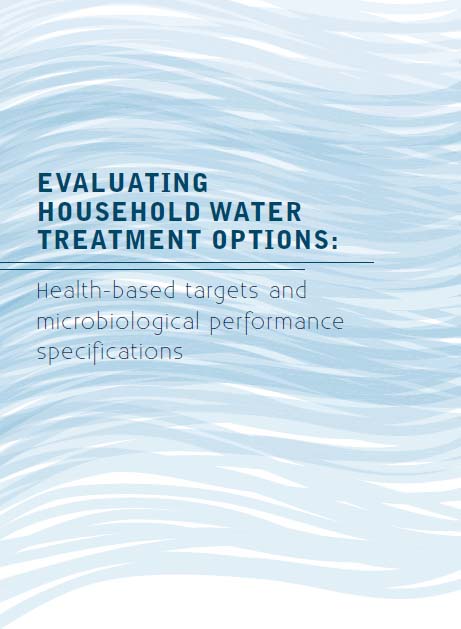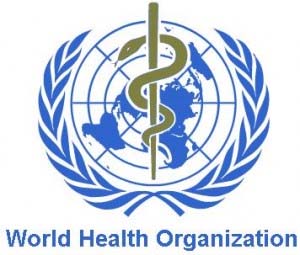/topics/treatment-and-purification
Treatment and Purification
Evaluating household water treatment options
Posted on 17 Jul, 2011 02:11 PM This document by the World Health Organisation, for the first time, sets forth global criteria to evaluate whether a household water treatment option reduces waterborne pathogens sufficiently to protect health. Through use of a risk-based framework and by emphasizing the philosophy of incremental improvement, it is intended to provide implementers and policy-makers with an evidence-based and pragmatic approach to select options suited to local conditions.
This document by the World Health Organisation, for the first time, sets forth global criteria to evaluate whether a household water treatment option reduces waterborne pathogens sufficiently to protect health. Through use of a risk-based framework and by emphasizing the philosophy of incremental improvement, it is intended to provide implementers and policy-makers with an evidence-based and pragmatic approach to select options suited to local conditions.
Household water treatment interventions may play an important role in protecting public health where existing water sources, including those delivered via a piped network or other improved sources, are untreated, are not treated properly or become contaminated during distribution or storage. Household water treatment applications are a range of technologies, devices or methods employed for the purposes of treating water at the household level or at the point of use in other settings, such as schools, health-care facilities and other community locations. Point-of-use water treatment is another term used for household water treatment.
Bamboo charcoal as a natural Water Filter - An indigenous rural application
Posted on 16 Jul, 2011 07:24 PMGuest post: Shwetha Kamath (India Water Portal Volunteer)
About 74 per cent of India's total population, currently about 1.25 billion, live in rural areas. More than one third of the water available to them is not potable. In a grim reminder that poor quality of drinking water leads to serious health problems, India has admitted that about 180,000 rural populated areas are afflicted by diseases which are caused due to impure, toxic organic and inorganic substances including tri-halo methane, chlorine, etc. Some states have reported multiple contaminations in drinking water and there is no doubt that the current water situation in India will get much, much worse unless suitable solutions are sought. Most existing purification methods not only remove the impurities but drain out the essential minerals as well. Moreover, they are expensive and require extensive maintenance. Thus a natural filter comprising of bamboo, gravel, pebble and other locally available natural adsorbents is a great alternative to carry out water purification. What makes this filter unique is the use of bamboo charcoal which is not commonly used in any filter designed for domestic purposes.
A comparison of PureIt and Swach water purifier brands - Guest post by Mrinalini Goswami
Posted on 14 Jul, 2011 11:59 AMGuest post by: Mrinalini Goswami
Both the purifiers already have identified their space in the niche of household water treatment establishing themselves as competitive technologies. Brief highlights of both the purifiers are compiled in the table below:
PLC & SCADA based water quality, treatment & distribution management system for 428 MLD PCMC water supply system
Posted on 12 Jul, 2011 04:16 PMObjective: To monitor and control from a single point the water quantity, quality, treatment and distribution process in real time for the entire city.
This project caters to the need for a real time water auditing, monitoring and control system for the entire city of Pimpri Chinchwad spread over 171 sq.kms with a water supply of 428 ML per day.
Guidelines for drinking water quality - Fourth edition by World Health Organisation (2011)
Posted on 09 Jul, 2011 10:41 AM This integrates the third edition, which was published in 2004, with both the first addendum to the third edition, published in 2006, and the second addendum to the third edition, published in 2008. It supersedes previous editions of the Guidelines and previous International Standards.
This integrates the third edition, which was published in 2004, with both the first addendum to the third edition, published in 2006, and the second addendum to the third edition, published in 2008. It supersedes previous editions of the Guidelines and previous International Standards.
This edition of the Guidelines further develops concepts, approaches and information introduced in previous editions, including the comprehensive preventive risk management approach for ensuring drinking-water quality.
Hi-tech vs low-tech in the water sector in the village of Dandiganahalli near Bangalore - Article by S. Vishwanath
Posted on 28 Jun, 2011 05:40 PMEver since Schumacher wrote his now very, very famous book small is there has in my mind been a question of the appropriateness of the solutions we urban educated types posit for rural ‘problems’.
Multi-district assessment of water safety (M-DAWS) in Gujarat - A study by Water and Sanitation Management Organisation
Posted on 15 Jun, 2011 12:08 PMThis report by the Water and Sanitation Management Organisation (WASMO) is based on the analysis of Multi-District Assessment of Water Safety (M-DAWS) carried out in 8 districts of Gujarat (Vadodara,Valsad, Mehsana, Gandhinagar, Kachchh, Surat, Ahmedabad and Dangs) , where ensuring adequate and safe drinking water to the people has been looked upon as a huge challenge needing urgent action during years 2007 and 2008 .
The Multi-District Assessment of Water Safety (M-DAWS) programme was undertaken by Water and Sanitation Management Organisation (WASMO) with financial and technical support from UNICEF.
Water quality in Penukonda region of Anantapur district - A field report by Arghyam
Posted on 16 May, 2011 06:23 PMIntroduction
SEDS approached Arghyam to seek advice on the quality of drinking water in the area. Anantpur is the second most drought-prone area in India, and a lot of work has been done to deal with the water supply situation by the Government of Andhra Pradesh as well as NGOs and charities such as SEDS and the Sai Baba Trust, to name a few. There seems to be an adequate supply of water in the district, but very little or no attention has been paid to the quality of water.
Sustainable urban water supply in south India : Desalination, efficiency improvement, or rainwater harvesting?
Posted on 11 May, 2011 05:26 PMAbstract:
River bank filtration in Uttarakhand - Blog post by Neelima Garg
Posted on 11 May, 2011 02:30 PMProcess of River Bank Filtration technology
Pumping induces seepage from the surface water into the aquifer and results in quality improvements enroute to the well by natural processes such as filtration, biodegradation, adsorption, redox reactions and mixing. RBF can also occur under natural conditions as a result of an influent river.





